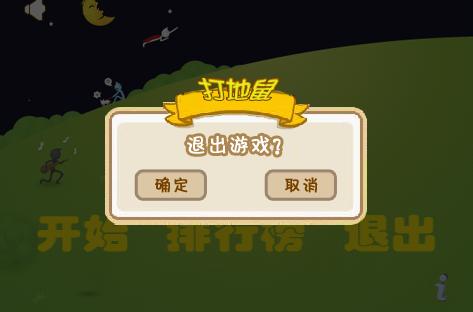Android使用自定义alertdialog实现确认退出按钮
有时候我们需要在游戏或应用中用一些符合我们样式的提示框(AlertDialog),以下是我在开发一个小游戏中总结出来的.希望对大家有用.
先上效果图:

下面是用到的背景图或按钮的图片
经过查找资料和参考了一下例子后才知道,要实现这种效果很简单.就是在设置alertDialog的contentView.
以下的代码是写在Activity下的,代码如下:
public boolean onKeyDown(int keyCode, KeyEvent event) {
// 如果是返回键,直接返回到桌面
if(keyCode == KeyEvent.KEYCODE_BACK || keyCode == KeyEvent.KEYCODE_HOME){
showExitGameAlert();
}
return super.onKeyDown(keyCode, event);
}
private void showExitGameAlert() {
final AlertDialog dlg = new AlertDialog.Builder(this).create();
dlg.show();
Window window = dlg.getWindow();
// *** 主要就是在这里实现这种效果的.
// 设置窗口的内容页面,shrew_exit_dialog.xml文件中定义view内容
window.setContentView(R.layout.shrew_exit_dialog);
// 为确认按钮添加事件,执行退出应用操作
ImageButton ok = (ImageButton) window.findViewById(R.id.btn_ok);
ok.setOnClickListener(new View.OnClickListener() {
public void onClick(View v) {
exitApp(); // 退出应用...
}
});
// 关闭alert对话框架
ImageButton cancel = (ImageButton) window.findViewById(R.id.btn_cancel);
cancel.setOnClickListener(new View.OnClickListener() {
public void onClick(View v) {
dlg.cancel();
}
});
}以下的是layout文件,定义了对话框中的背景与按钮.点击事件在Activity中添加.
文件名为 : shrew_exit_dialog.xml
<?xml version="1.0" encoding="utf-8"?>
<RelativeLayout
xmlns:Android="http://schemas.android.com/apk/res/android"
android:layout_height="wrap_content"
android:layout_width="wrap_content">
<!-- 退出游戏的背景图 -->
<ImageView android:id="@+id/exitGameBackground"
android:layout_centerInParent="true"
android:layout_height="wrap_content"
android:layout_width="wrap_content"
android:src="@drawable/bg_exit_game" />
<!-- 确认按钮 -->
<ImageButton android:layout_alignBottom="@+id/exitGameBackground"
android:layout_alignLeft="@+id/exitGameBackground"
android:layout_marginBottom="30dp"
android:layout_marginLeft="35dp"
android:id="@+id/btn_ok"
android:layout_height="wrap_content"
android:layout_width="wrap_content"
android:background="@drawable/btn_ok" />
<!-- 取消按钮 -->
<ImageButton android:layout_alignBottom="@+id/exitGameBackground"
android:layout_alignRight="@+id/exitGameBackground"
android:layout_marginBottom="30dp"
android:layout_marginRight="35dp"
android:id="@+id/btn_cancel"
android:layout_height="wrap_content"
android:layout_width="wrap_content"
android:background="@drawable/btn_cancel" />
</RelativeLayout>就这样经过了以上几步,就可以实现自定义AlertDialog的效果了. 用同样的思路可以实现其它更复杂的效果.
alertdialog实现确认退出按钮实例代码:
package com.example.alertdialog;
import android.os.Bundle;
import android.app.Activity;
import android.app.AlertDialog;
import android.content.DialogInterface;
import android.view.Menu;
import android.view.View;
import android.widget.Toast;
public class MainActivity extends Activity {
@Override
protected void onCreate(Bundle savedInstanceState) {
super.onCreate(savedInstanceState);
setContentView(R.layout.activity_main);
}
//名字如果是onBackPressed,那就是按下手机返回键的效果,参数为空即可。
public void onBackPressed1(View v) {
new AlertDialog.Builder(this).setTitle("确认退出吗?")
.setIcon(android.R.drawable.ic_dialog_info)
.setPositiveButton("确定", new DialogInterface.OnClickListener() {
@Override
public void onClick(DialogInterface dialog, int which) {
// 点击“确认”后的操作
MainActivity.this.finish();
}
})
.setNegativeButton("返回", new DialogInterface.OnClickListener() {
@Override
public void onClick(DialogInterface dialog, int which) {
// 点击“返回”后的操作,这里不设置没有任何操作
Toast.makeText(MainActivity.this, "你点击了返回键", Toast.LENGTH_LONG).show();
}
}).show();
}
}
赞 (0)

